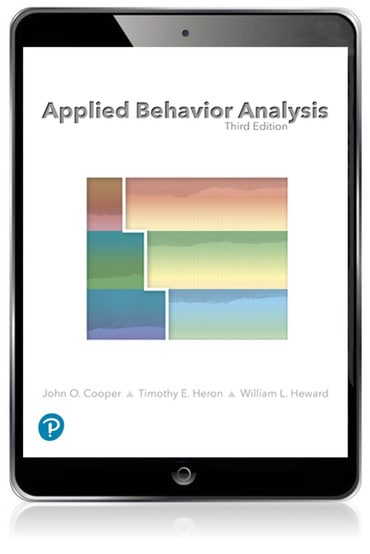PART 1: INTRODUCTION AND BASIC CONCEPTS
1. Definition and Characteristics of Applied Behavior Analysis
2. Basic Concepts and Principles
PART 2: SELECTING, DEFINING, AND MEASURING BEHAVIOR
3. Selecting and Defining Target Behaviors
4. Measuring Behavior
5. Improving and Assessing the Quality of Behavioral Measurement
PART 3: EVALUATING AND ANALYZING BEHAVIOR CHANGE
6. Constructing and Interpreting Graphic Displays of Behavioral Data
7. Analyzing Behavior Change: Basic Assumptions and Strategies
8. Reversal and Multielement Designs
9. Multiple Baseline and Changing Criterion Designs
10. Planning and Evaluating Applied Behavior Analysis Research
PART 4: REINFORCEMENT
11. Positive Reinforcement
12. Negative Reinforcement
13. Schedules of Reinforcement
PART 5: PUNISHMENT
14. Positive Punishment
15. Negative Punishment
PART 6: ANTECEDENT VARIABLES
16. Motivating Operations
17. Stimulus Control
PART 7: VERBAL BEHAVIOR
18. Verbal Behavior
PART 8: DEVELOPING NEW BEHAVIOR
19. Equivalence-based Instruction
20. Engineering Emergent Learning with Nonequivalence Relations
21. Imitation, Modeling, and Observational Learning
22. Shaping
23. Chaining
PART 9: DECREASING BEHAVIOR WITH NONPUNISHMENT PROCEDURES
24. Extinction
25. Differential Reinforcement
26. Antecedent Interventions
PART 10: FUNCTIONAL ASSESSMENT
27.Functional Behavior Assessment
PART 11: SPECIAL APPLICATIONS
28. Token Economy, Group Contingencies, and Contingency Contracting
29. Self-Management
PART 12: PROMOTING GENERALIZED BEHAVIOR CHANGE
30. Generalization and Maintenance of Behavior Change
PART 13: ETHICS
31. Ethical and Professional Responsibilities of Applied Behavior Analysts


